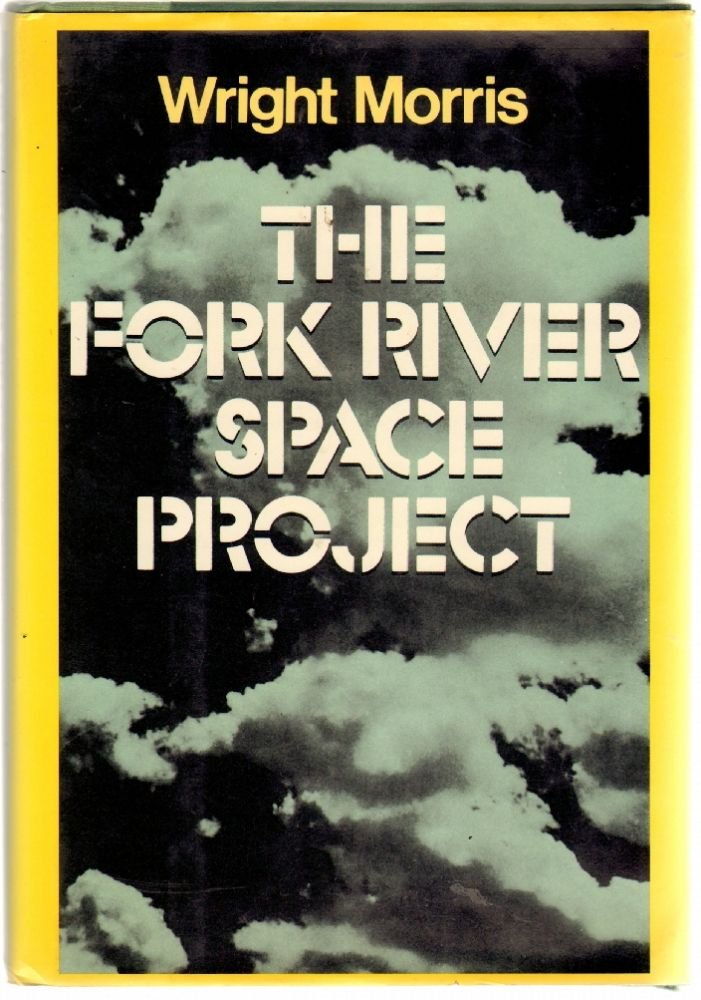A Midwestern Novel for the 21st Century: On Wright Morris’s “The Fork River Space Project”
Wright Morris | The Fork River Space Project | Harper & Row | 1977 | 185 Pages
I’m betting that (unless you are seventy or older) you haven’t read Wright Morris (1910-1998): Nebraska-born, a novelist first and foremost but also the author of superb memoirs and an indispensable little book on American literature, The Territory Ahead, not to mention his photobooks (which should be on the shelves of anyone interested in the Midwest). It’s a bet I’d be happy to lose.
“I have just finished reading Wright Morris’s Fire Sermon,” the influential critic John L. Aldridge wrote in 1971. “He seems to me quite simply the best novelist now writing in America.” Never mind “best,” a judgment sure to bog us down in pointless argument; Morris was and is good, very good.
But let’s suppose you have read Morris (cause for rejoicing). In that case, I’ll propose another bet—that you haven’t read his 1977 novel The Fork River Space Project. I say that because, since I first read and fell in love with that book, almost forty years ago, I have only very rarely encountered anyone who’s familiar with it. And in those few cases, the response tended to be, “Yeah, I started that one, but I didn’t get very far. Strange book.”
The narrator of this novel, an older man named Kelcey, is himself a writer: “If you browse in magazines sold on supermarket counters you may have remarked the name Serenus Vogel. That is my pen name. I do humorous, fantasy-type pieces.” Kelcey and his younger wife, Alice, who lives in southeastern Nebraska, become acquainted with an odd duo: a plumber, Harry Lorbeer, and a house-painter, Dahlberg (who turns out to have written science fiction). These two and a third man are living in Fork River, a ghost town across the border in Kansas, said to have been abandoned after a tornado struck many years earlier.
On the first page of the novel, Kelcey begins musing about “wherever it is we see what we imagine, or imagine what we see.” Near the house where he and Alice live, he tells us, there are wagon tracks heading west, “but you can’t perceive them at ground level. They appear in aerial photographs made in a government survey during the depression. You have to know what you’re seeing.”
So at the outset we know we’re in for a tale of shifting perspectives:
“I have a fire-blackened penny, dated 1851, found in an ashpit with human bones, two sardine tins, musket balls, and arrowheads. Would you say that is history or science fiction? My wife and I live on the eastern rim of the plains, near the southerly fringe of the last great ice sheet. From the air you can see where the ice scoured the surface, rolling up balls of turf from the ancient sea’s bottom. My friend Rainey refers to them as dinosaur turds. Eleven miles due west a man-made mini-crater seats sixty thousand rabid football fans in season. They wear red hats and jackets and in a period of excitement might suggest that the crater is in eruption. What you see out here is from where you see it, and what you know.”
Routine talk about “the Midwestern Novel,” like talk about “the Midwest” more generally, tends too often to run along the same familiar lines. If in some respects The Fork River Space Project, like all fiction, is “of its time” (“dated,” as we say), it is also prescient: a Midwestern novel for the twenty-first century. It could sit on your shelf next to Craig Childs’ Atlas of a Lost World: Travels in Ice-Age America and Robert Macfarlane’s Underland: A Deep Time Journey. Morris wrote many books set somewhere other than the Great Plains, but whatever was in his field of vision, his imagination was formed here.
This review was written as part of our series on Midwestern history, a collection of reviews on histories and texts of historical significance in the region. Writers interested in contributing to this series are encouraged to contact its editor, Jacob A. Bruggeman.

